Dell EMC unveiled its latest portfolio including both 3rd Gen AMD EPYC “Milan” and 3rd Gen Xeon Scalable (Ice Lake) servers. Although most of the industry is still under embargo for the Ice Lake launch, we do have a few details from Dell that they can share. With this release, we get the first view of Ice Lake Xeons in a major system vendor platform. Of course, since it is St. Patrick’s day, we have changed Dell’s white background to green to match the day.
Dell EMC PowerEdge 2021 Portfolio
Here is the PowerEdge 2021 portfolio for compute servers that are being announced today. We are going to discuss them starting at the top left and moving to the right down the slide.
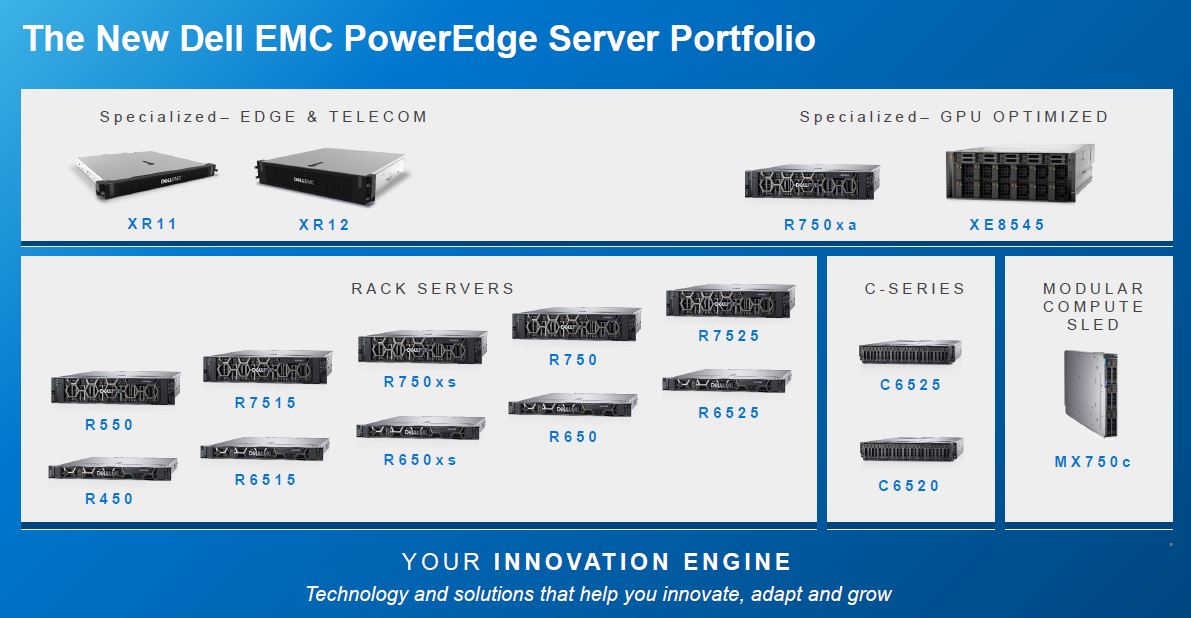
First, there are new ruggedized platforms, the PowerEdge XR11 and XR12. These are PowerEdge servers designed to be deployed in the field and are short depth to fit in tight spaces. The XR11 and XR12 series tend to be an Intel Xeon series historically and here we see 3rd Gen Intel Xeon Scalable processors.
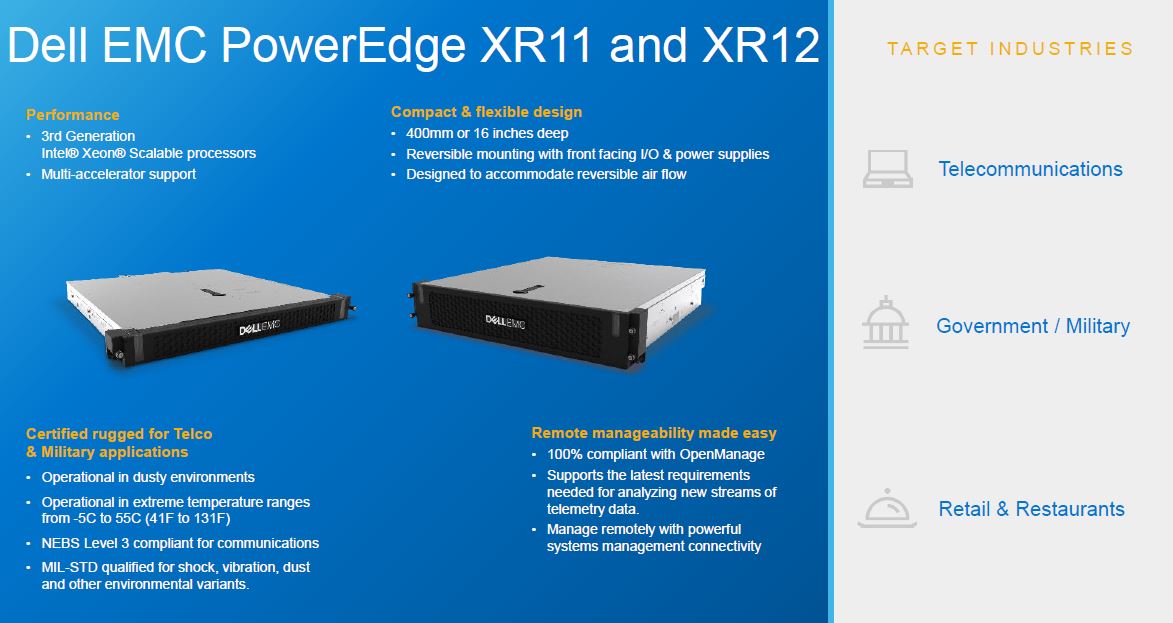
On the accelerated side, there are two options, the Dell EMC PowerEdge XE8545 and R750xa. The former is an AMD EPYC 7003 “Milan” solution while the R750xa is an Intel solution.
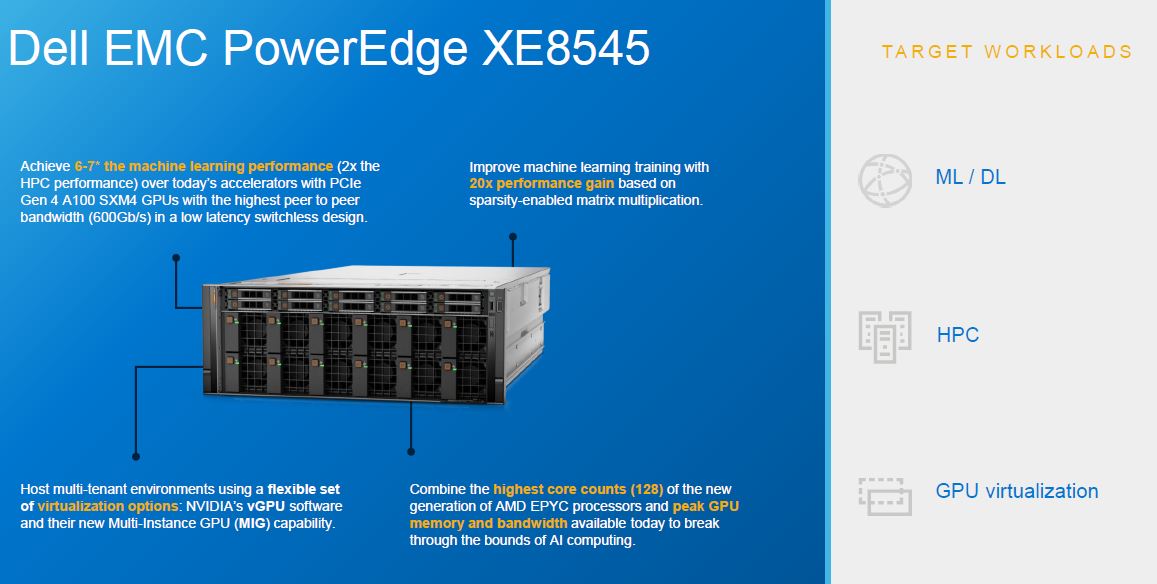
In our AMD EPYC 7003 Milan launch piece, we showed off a few photos of the XE8545. This is a dual-socket AMD EPYC 7003 (we suspect often EPYC 7763) based solution with NVIDIA GPUs. Specifically, the system houses a 4x NVIDIA A100 “Redstone” platform that allows direct NVLink communication between all four GPUs without the need for NVSwitch technology. Dell is able to cool not just up to 4x 400W for the A100 40GB SXM4 modules, but also up to a full 4x 500W for the A100 80GB SXM4 modules on air cooling. The 500W GPUs push the total system’s power needs up to around 3kW and also require slightly lower ambient data center temperatures.
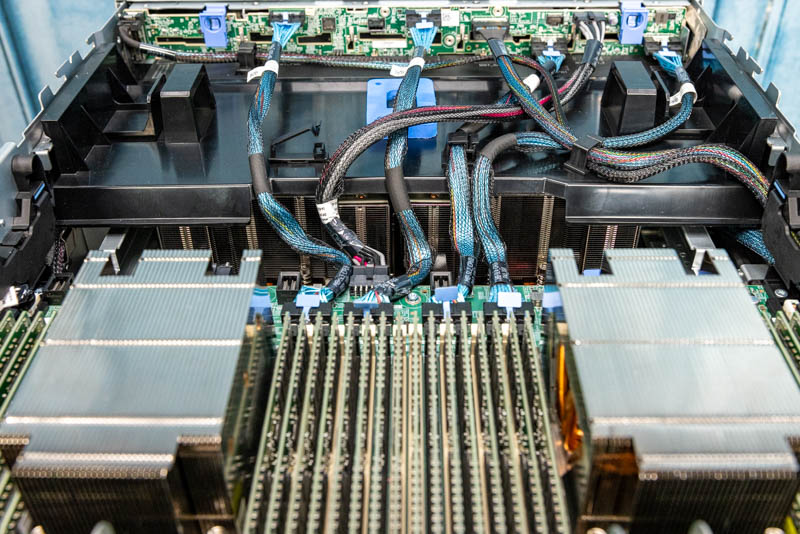
As you may have guessed, stay tuned for that review.
The other accelerated server is the Dell EMC PowerEdge R750xa. This is a 2U standard R750 (R740 successor) with the ability to run multiple PCIe Gen4 accelerators.
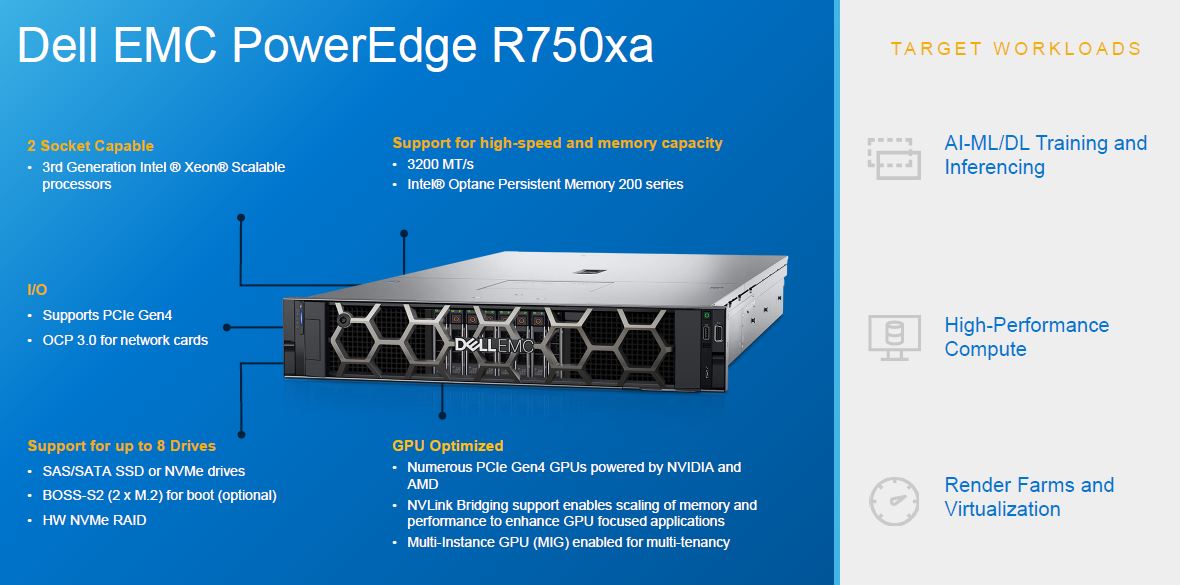
One of the cool parts of this release is that Dell EMC got approval from Intel to give us our first glimpse from a major systems vendor of the 3rd Generation Intel Xeon Scalable Ice Lake server internals. One can see that we have front-mounted accelerators on either side of the middle drive bays, then the fan partition, then two Socket P’s (P4) with eight DIMMs per socket. It also looks like Dell EMC has some special heat pipe cooling near the front of its heatsinks going to the fan area.
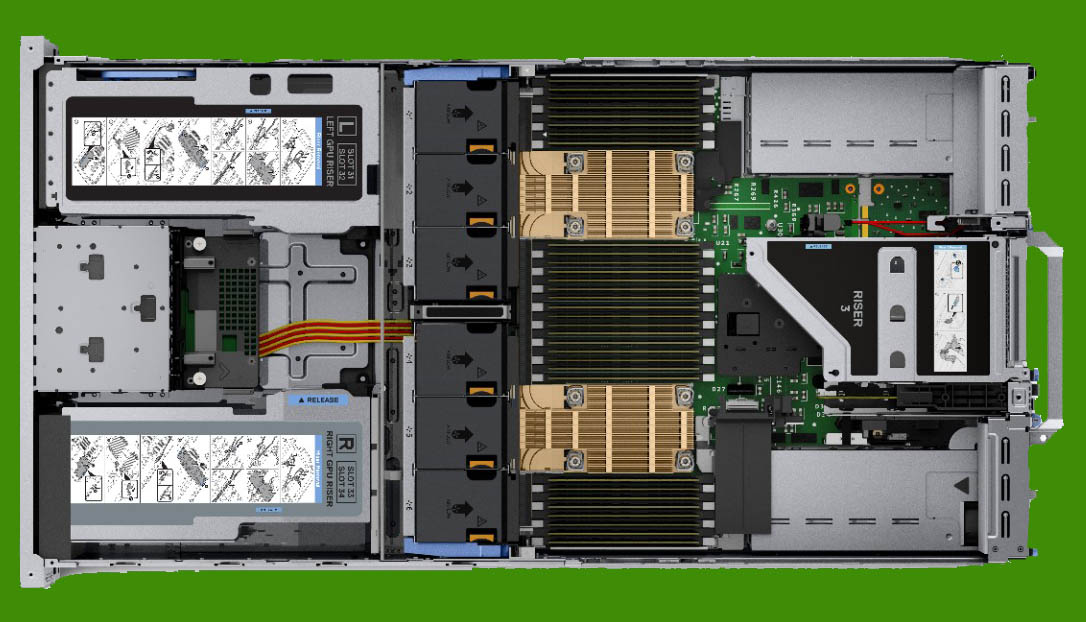
Overall this is a very different platform that looks like it is accommodating PCIe accelerators. That means Dell EMC has the top-end acceleration platform as the XE8545 and the R750xa is the lower end platform. Our sense is that this is the next system we will try to review once Ice Lake comes out given we are doing the XE8545 on the AMD EPYC side.
In terms of the rack servers, there are AMD and Intel offerings. The AMD offerings (PowerEdge R7515, R6515, R7525 and R6525) have largely been released already. One will notice the conspicuous placement of the R7525 and R6525 at the top of the stack. When we reviewed the Dell EMC PowerEdge R7525 we noted that the machine is very well built. It is fairly clear that Dell was positioning this as its premium solution for 3rd generation parts.
The new servers are the R550, R450, R750xs, R650xs, R750, and R650. These are the six Intel solutions and they are only six because Dell has added the xs variants which could have represented options in previous generations of R7x0 and R6x0 servers.
We asked Dell about the lack of a Cooper Lake Xeon platform since we have already looked at Supermicro SYS-240P-TNRT 4P 3rd Gen Xeon Scalable Server and the Gigabyte R292-4S1 Server Review. HPE, Lenovo, and Inspur also have 4P Cooper Lake systems. Dell said that the 4P market is shrinking and that it is declining to update its 4-socket platforms with that portion of the 3rd Generation Intel Xeon Scalable product. If you are a Dell R940/ R840 customer, then your options are to:
- Continue using the older Xeon generation technology
- Upgrade to AMD EPYC 7003 and consolidate workloads to dual-socket
- Go to vendors that offer the full 3rd Generation Intel Xeon Scalable line, or
- Wait until Sapphire Rapids in 2022.
If you want to learn more about the solution that Dell is not offering, you can see our recent Gigabyte Cooper Lake 4P system review here:
Dell says that this product update cadence aligns with its customer’s needs so it does not need to offer the 3rd Gen Xeon Scalable Cooper Lake solution.
Beyond the rack servers, we have the 2U 4-node (2U4N) solutions of the C6525 and C6520. We reviewed the PowerEdge C6525 already in the Rome generation but it is being updated for Milan.
Finally, there is the MX750c which is the blade server module.
One of the more interesting aspects is the design innovation that Dell is highlighting. Here is the slide:
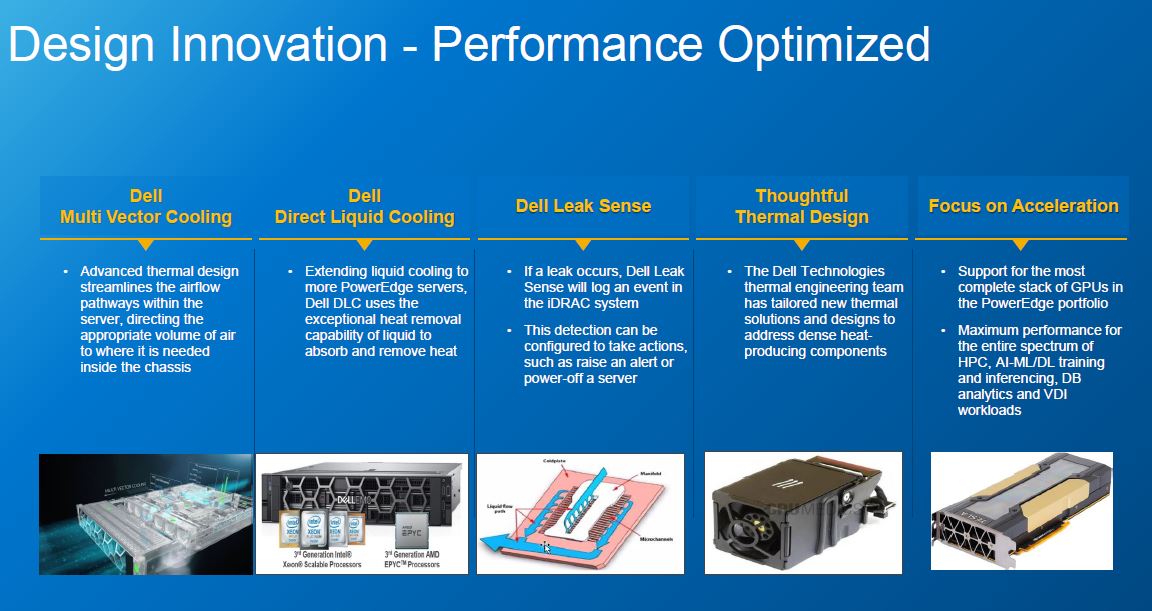
What is interesting here is that effectively all of the innovation being highlighted is centered around cooling. As we move into 2022/ 2023, power consumption is set to spike which will make cooling even more important.
Final Words
All told, this is a great announcement for Dell’s customers. Having all 17 mainstream platforms for 2021 that will support AMD EPYC 7003 and 3rd Gen Intel Xeon Scalable (Ice Lake) presented on a slide is great.
The 2021 generation will be centered around PCIe Gen4, but 2022 is when we will start seeing major changes. The next generation of server platforms will scale to much higher power levels and with PCIe Gen5 and CXL the architecture will change significantly. As part of our discussion around the portfolio, we posed the question of disaggregation and Dell said they are looking into it like every server vendor is at this point.

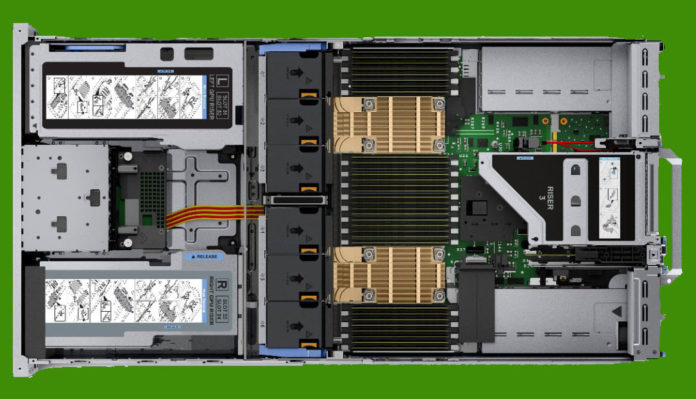



They’ll released gen 15 of Dell PowerEdge and I’m still using gen 12 even haven’t try gen 14 yet :’)
where is R250 or R350?
is possible a good deal of epyc naples for home lab ?
@stefan marton
Depend on use case, if you need more cores (aka multithreading ) via naples than answer should be positive. Upside is easy path to upgrade cpu to 2ng/3rd gen EPYC (depend on BIOS)
greetings
@JIM
R250/R350 aren’t here yet because those platform’s don’t use Xeon Scalable (or AMD), so there is no new CPU for them yet. Maybe in a while when the 11900K Xeon variant is out?